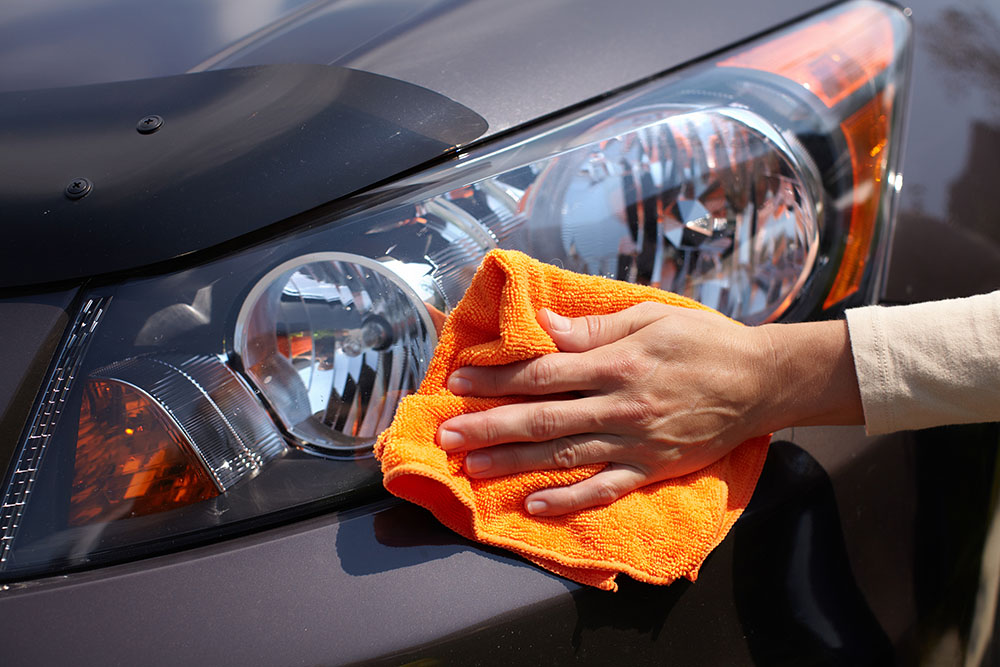How To Remove your Vehicle’s Winter Grime, Spring Back to Shine

Vehicle maintenance is crucial at all times, but even more important with the spring and summer months on the way.
One of the main reasons: salting of roads, not to mention magnesium chloride, and other nasty substances that are likely to adhere to the underside of your vehicle.
The biggest offenders are corrosion and rust, but road warriors should fear not--there are a few simple things you can do to counteract these undesirable effects.
Apart from wheels, a car’s undercarriage is the part of a vehicle that’s most susceptible to corrosion and rust because it is in close proximity to the road. The undercarriage of a car mostly consists of unprotected metal components that can easily be damaged. This can cause mechanical issues in the long run.
Although it does help to regularly rinse the undercarriage with a hose or a pressure washer, you should also have this part of your vehicle properly cleaned and sealed by a professional car cleaner at regular intervals.
Mike Pennington, director of training at Meguiars, likes to use the phrase “frequent car care is easy car care.” As a 25-year veteran of the car wash/wax/detailing industry, Pennington has handled just about every car care challenge when it comes to protecting your vehicle after a tough winter.
“Washing first is key,” Pennington said. “It’s important to rinse your car thoroughly with fresh water before washing. If you apply soap water directly to dry paint, you may end up grinding the salt into your car’s finish and scratch the surface.”
Pennington also suggests using two buckets during the washing process and filling one with a wash solution and the other with fresh water. Wash the car from the top down with a mitt, which you should rinse in the bucket with fresh water before dipping it in the wash solution again.
As the last step, use a microfiber towel to dry all the areas of the car thoroughly.
Then, before you apply any wax, do the “palm test”, Pennington said.
“Run your hand across the trunk, the hood, along all the chrome, even the windows. If you feel anything funky, go over the exterior with a clay bar to get rid of any bonded contamination on the paint’s surface that the wash did not remove.”
If your car’s paint finish is scratched or a bit damaged, you can apply a polishing compound to smooth out the surface. Finally, apply the wax, using gentle overlapping motions.
You may not be able to prevent all the wear and tear on your vehicle during the winter months. Yet, these simple steps will go a long way to ensure the longevity of your car.
Here’s Pennington’s personal checklist to remove winter wear and return your vehicle to a spectacular March shine:
- Don’t forget to carefully wash the undercarriage. What you can’t see can definitely cause havoc if you don’t remove the salt, grime, tar, and other unwanted substances hanging around.
- Keep your wheels and tires pristine. Don’t let brake dust collect on wheels because they can easily become stained or pitted.
- Call upon a water-repellent product to bead-off water on exterior glass.
- Use a reliable anti-fog product on the inside of your glass to reduce interior fogging during cold weather.
- Clean your matts and all interior surfaces to avoid mildew and corrosion.
- Polish your headlights to enhance visibility at night. If your lenses are dull, a good polishing kit can usually do the job.
- Use a glass cleaner to prevent streaking or smearing, both inside and outside.
- Apply some protectant on rubber and vinyl surfaces to prevent sun damage and return your interior to a like-new condition.
- Clean and condition leather upholstery with products designed for vehicle leather surfaces. This important step helps protect leather surfaces from spills and also keeps them supple.